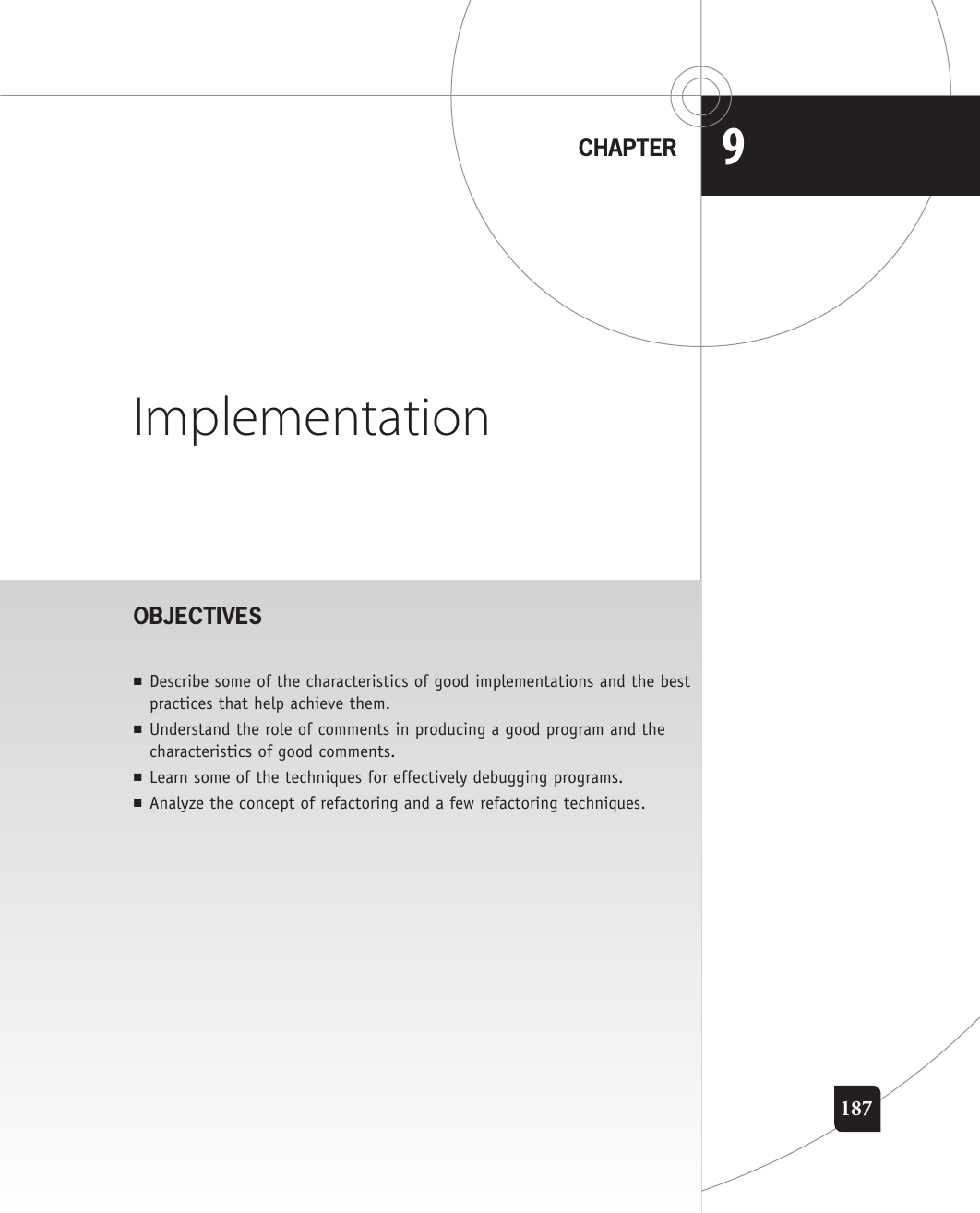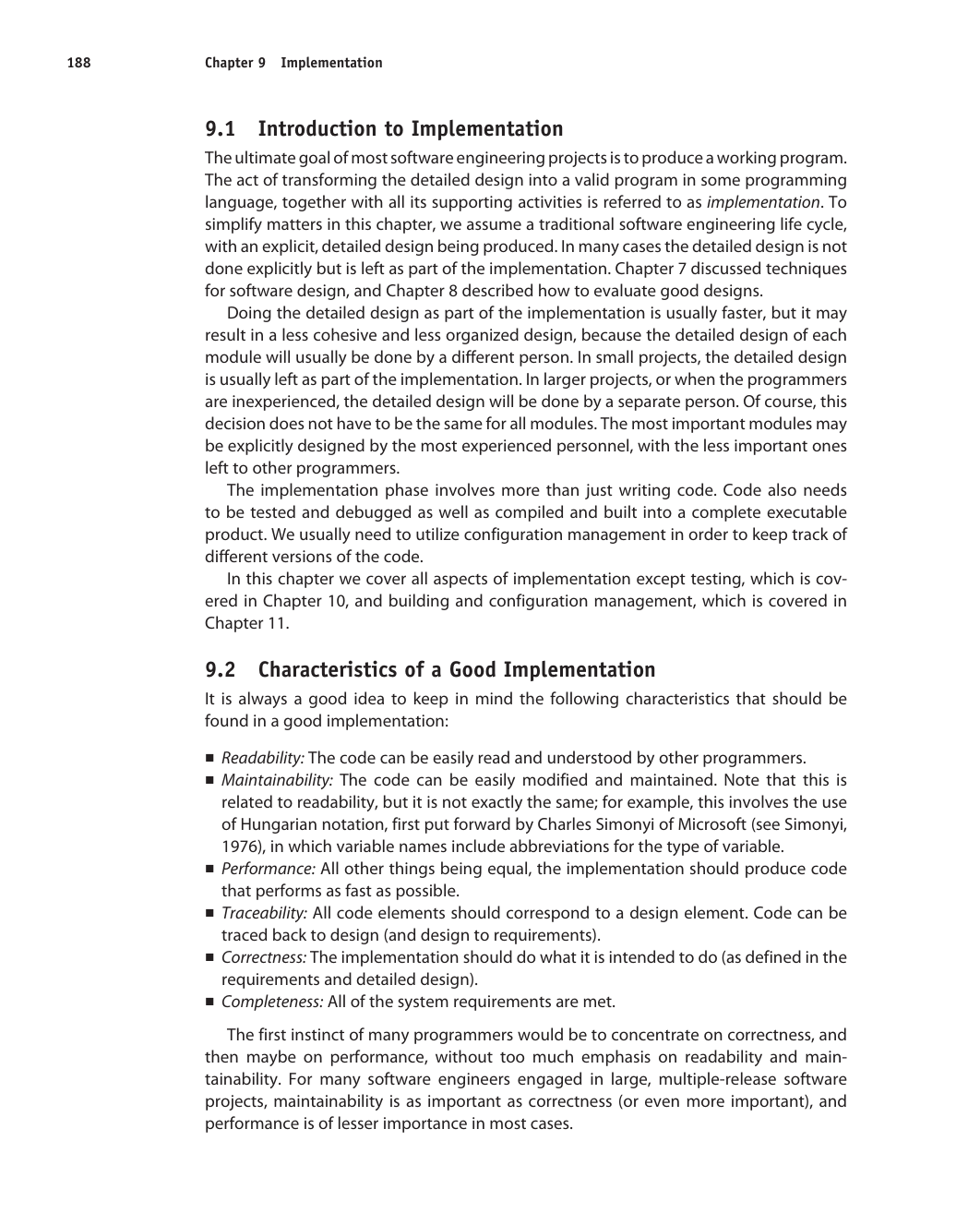
OBJECTIVES
187
CHAPTER
9
Implementation
nî
Describe some of the characteristics of good implementations and the best
practices that help achieve them.
nî
Understand the role of comments in producing a good program and the
characteristics of good comments.
nî
Learn some of the techniques for effectively debugging programs.
nî
Analyze the concept of refactoring and a few refactoring techniques.
91998_CH09_Tsui.indd 187 1/10/13 10:57:49 AM

9.1 Introduction to Implementation
The ultimate goal of most software engineering projects is to produce a working ...
Get Essentials of Software Engineering, 3rd Edition now with the O’Reilly learning platform.
O’Reilly members experience books, live events, courses curated by job role, and more from O’Reilly and nearly 200 top publishers.

